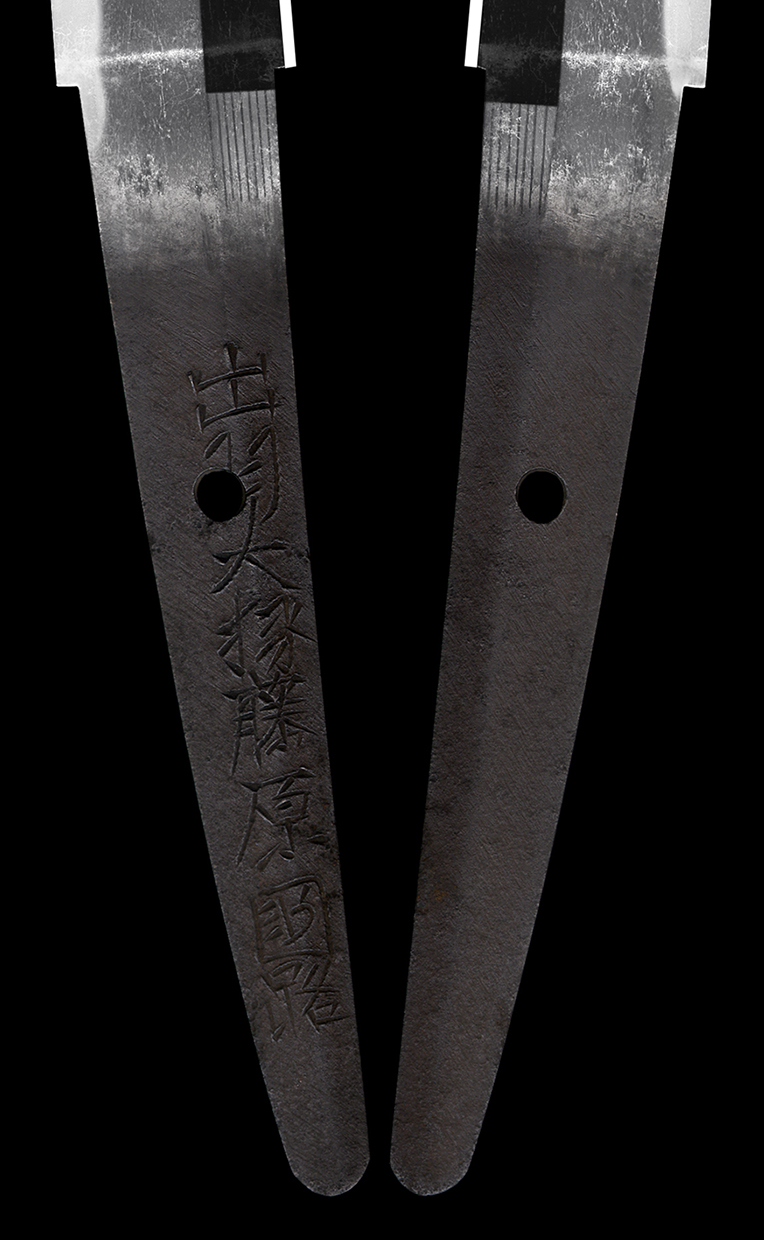Previous answer is
Dewa Daijo Fujiwara Kunimichi
出羽大掾藤原国路
Special feature: Dewa Daijo Fujiwara Kunimichi's blades are known for their coarse
jihada and three suji-hatamoto (three parallel hamon lines). This distinctive jihada and
hamon are highly favored by many people. While the hamon is influenced by Yamashiro
swordsmiths, it has a pointed gunome pattern and a deep nie, creating a unique and
appealing charm.
Aoi Fine Arts Comment: Dewa Daijo Fujiwara Kunimichi was a disciple of Horikawa
Kunihiro and had a distinctive hamon with a three-suji style kissaki. Some of his works
may resemble those of the first-generation Tanba swordsmiths. His blades include both
Soshu-den and Yamashiro den characteristics. The ornate works showcase exceptional
craftsmanship, while the Niedeki Gunome midare blades exhibit variety and enduring
appeal. We highly recommend considering this sword.
==============================================
Appraisal Quiz #775 (December 30th, 2023)
Who made this sword do you think ?
==============================================
Blade Length: 71.4 cm/ 28.1 inches
Curvature: 1.4 cm / 0.55 inches
Peg Hole: 1
Width at Base: 3.43 cm / 1.35 inches
Width at Tip: 2.56 cm/ 1.01 inches
Thickness: 0.96 cm / 0.38 inches
Shape: This is a robust and magnificent sword with a wide body, substantial thickness,
deep curvature, and a large kissaki (pointed end). It features bo-hi (grooves) on both sides.
Jigane (blade surface): The jigane exhibits a well-forged surface with a prominent
itame hada (wood grain pattern) and visible jigane (surface pattern).
Hamon (temper line): The hamon displays a small gunome pattern
with deep nie (bright martensite lines), creating a lively and irregular pattern.
================================================
Answer will be posted at next Appraisal Quiz.
================================================
(Please acknowledge not replying to mail about Appraisal Quiz by our convenience.)


